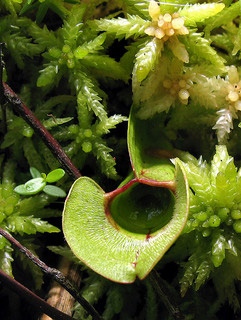
Tomorrow is World Wetlands Day. Time to join the other 162 countries that are signatories of the Convention on Wetlands — brought into effect 42 years ago on the shores of the Caspian Sea in Ramsar, Iran — to celebrate these important ecosystems. The word “wetland” is often associated with marshes, but there are as many types of wetlands as there are colors in the rainbow. In the United States, some of the most common types are marshes, swamps, bogs and fens. Do you know what sets them apart?
A marsh is a wetland whose primary source of water is surface water, such as a lake, river or — in the case of tidal marshes — the sea. The marsh’s landscape is dominated by soft-stemmed plants like cattail or reed grass.
A swamp, on the other hand, is dominated by woody plants. The shrubs and trees that grow in a swamp are well-suited to water, like the cypress trees that we’re partnering with The Nature Conservancy to plant in South Carolina’s Washo Reserve or the several varieties of oak that we’re planting in Shawnee National Forest, Illinois, with the National Wild Turkey Federation.

A bog is my favorite kind of wetland, both because of how it forms and because of the rare species that live there. The main ingredient of a bog is sphagnum moss, which holds rain water to create the moist wetland environment. Bogs can form in one of two ways. Sometimes, the sphagnum moss slowly covers a patch of earth, where it then prevents rainwater from leaving the surface. Other times, the moss can actually grow over a pond or other body of water, eventually filling it in a process known as terrestrialization. The sphagnum moss performs magic, turning water into land! A bog is a very acidic environment, and it takes a certain kind of species to thrive there. Many carnivorous plants call the bog home, such as sundews and pitcher plants. They may seem out-of-this-world, but they’re all part of Earth’s incredible biodiversity.

A fen is very similar to a bog, but it relies not just on precipitation as a water source, but also on groundwater, making it less acidic and more hospitable to a wider variety of plants, including colorful wildflowers.
One thing all these types of wetlands have in common is that they help prevent flooding, whether by absorbing precipitation or by slowing and storing water. In addition, many wetlands clean polluted water, acting as natural filters. In fact, many cities are now using wetlands as green infrastructure.
Which of these types of wetlands are found near you?